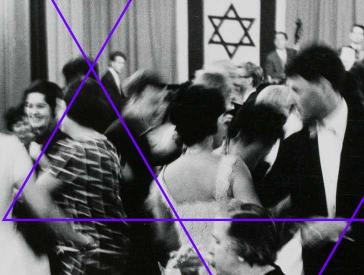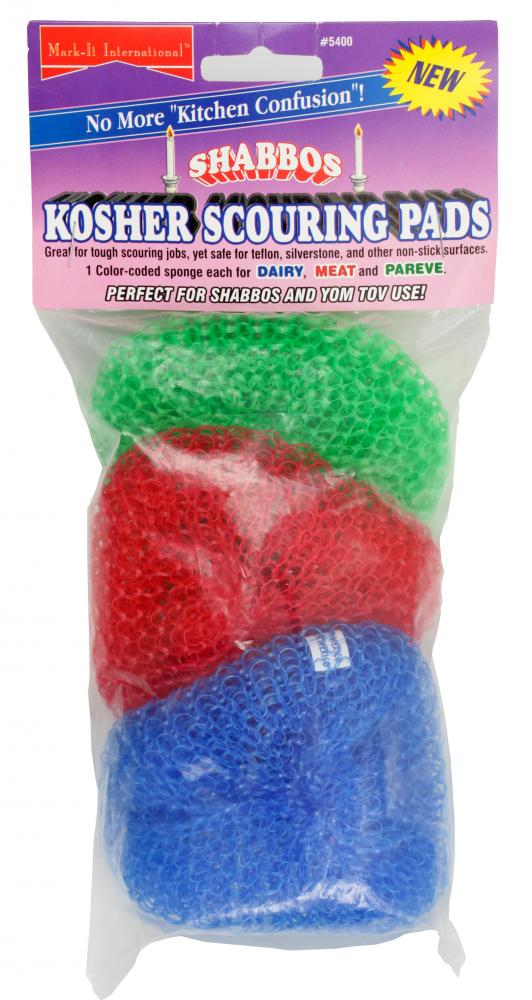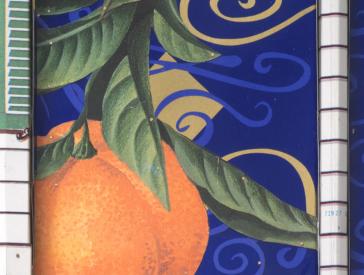Color-Coded Scouring Pads and Jewish Dietary Laws
Object in Showcase
This package of three scouring pads from the United States promises “No more ‘kitchen confusion!’” Jewish dietary law (kashrut in Hebrew) distinguishes between permitted and forbidden foods. Foods that may be eaten are called “kosher.”
Kashrut
Most of the kashrut rules are contained in the Torah, or the Hebrew Bible, and one of the most important forbids Jews to eat meat and milk products at the same time. In a traditional religious household, meat is therefore never served in a cream sauce, and butter may not be used to fry meat.
What is Kashrut?
Kashrut, Hebrew, the ritual purity laws, particularly the dietary laws; a kosher food is permitted, while a treyf food is forbidden.
What is the Torah?
Torah (Hebr. for instruction), refers to the the first part of the Tanakh (Hebrew Bible), the five books of Moses, and more broadly, to the whole body of religious law
Color-Coded System for Separating Dishes
Jews are also required to separate the utensils that come into contact with food. This means that they must always have two sets of dishes, pots, silverware, frying pans, towels, and scouring pads. To ensure that nothing gets mixed up, the utensils are usually color-coded or marked with stickers or tags. The blue pad is meant for dishes used for milk, the red for utensils for meat, and the green for dishes that come into contact with food containing neither meat nor milk. These neutral types of food – fruit, vegetables, and also certain types of fish – are called “pareve.”
Convenient Aids from the US and Israel
If religious Jews in Germany want to buy products for a kosher household, they must order them from stores in the United States and Israel, which ship all the necessary items worldwide.
| Title | Scouring Pads |
|---|---|
| Manufacturer | Mark-It International, New Jersey |
| Collection | Judaica |
| Location and year of origin | USA, 1986–2000 |
| Medium | Plastic |
| Dimensions | 25 x 12,6 x 6 cm |
Selected Objects: Judaica Collection (9)



 X
X









